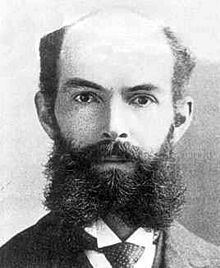Nationality American Children 3 | Name William Osgood Role Mathematician | |
 | ||
Born March 10, 1864Boston, Massachusetts ( 1864-03-10 ) Alma mater Harvard University, University of Gottingen, Friedrich-Alexander-University, Erlangen-Nuremberg Spouse Teresa Osgood, Celeste Phelpes Morse Books Plane and solid analytic g, Plane and Solid Analytic, The Madison Colloquiu, Mechanics ‑ Scholar's Choice E, Mechanics | ||
William Fogg Osgood (March 10, 1864, Boston – July 22, 1943, Belmont, Massachusetts) was an American mathematician, born in Boston.
Contents

Education and career
In 1886, he graduated from Harvard, where, after studying at the universities of Göttingen (1887–1889) and Erlangen (Ph.D., 1890), he was instructor (1890–1893), assistant professor (1893–1903), and thenceforth professor of mathematics. He became professor emeritus in 1933. Osgood was chairman of the department of mathematics in Harvard from 1918 to 1922.
From 1899 to 1902, he served as editor of the Annals of Mathematics and in 1904–1905 was president of the American Mathematical Society, whose Transactions he edited in 1909–1910.
Contributions
The works of Osgood dealt with complex analysis, in particular conformal mapping and uniformization of analytic functions, and calculus of variations. He was invited by Felix Klein to write an article on complex analysis in the Enzyklopädie der mathematischen Wissenschaften which was later expanded in the book Lehrbuch der Funktionentheorie.
Osgood curves, Jordan curves with positive area, are named after Osgood, who published a paper proving their existence in 1903.
Besides his research on analysis, Osgood was also interested in mathematical physics and wrote on the theory of the gyroscope.
Awards and honors
In 1904, he was elected to the National Academy of Sciences.
Personal
Osgood's cousin, Louise Osgood, was the mother of Bernard Koopman.
Selected publications
Osgood's books include:
